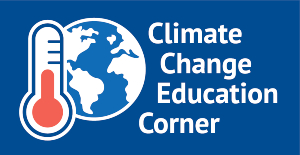I was lucky enough to spend a year in Italy during graduate school. If you’ve ever been there, you know how good the food is. It seems to me that Italians simply take food far too seriously to serve a bad meal, even to a clueless foreigner. In addition to being proud of their food, I think it’s not too gross a generalization to say that some Italians can also be rather opinionated about food. If you’d like to be treated to a lively discussion, complete with enthusiastic hand gestures and creative cursing, just ask a group of Italian cooks how to make some iconic dish, like pesto.
 I have no doubt that if you consulted 100 Italian cooks, you would be given 100 pesto recipes, each of which the cook would declare to be unquestionably the most authentic and delicious. All the other recipes? Pale imitations.
I have no doubt that if you consulted 100 Italian cooks, you would be given 100 pesto recipes, each of which the cook would declare to be unquestionably the most authentic and delicious. All the other recipes? Pale imitations.
But here’s the thing. If you put those 100 cooks in a room and insisted that they create a consensus pesto recipe, they could do it. Yes, a great deal of compromise would be necessary, and no one would leave the room entirely satisfied. But a recipe including basil, garlic, pine nuts, cheese, and olive oil would emerge. The most vicious disagreement might be over the ratio of parmesan to pecorino cheese. It is possible that a scholarly footnote explaining that disagreement in great detail would have to be included. And the great mortar and pestle versus food processor controversy might require a full chapter. But a recipe capturing the culinary consensus on the essence of pesto would emerge. Maybe some green smoke smelling faintly of garlic would be released from the chimney.
What does pesto have to do with climate change? Well, if you were to ask 100 climate scientists exactly what we can expect to happen with the climate in the next century, you’d get 100 slightly different answers. But as with those pesto recipes, their answers would all agree on the basics of climate change: It’s real; it’s bad; it’s us; and there’s hope. Arguing that these conclusions are somehow debatable is as ridiculous as declaring that the consensus pesto recipe should include dill pickles. (Please don’t write in to tell me that you put dill pickles in your pesto. You do you, but neither I nor 60 million Italians need to know about it.)
Okay, I’m being a little facetious, but your students need to understand that there is a profound consensus about these four conclusions. And these conclusions are not in any serious scientific doubt. Your students, like all of us, are very likely to encounter people who claim—whether owing to misunderstanding or bad faith—that the science is unsettled. Your students might, for example, stumble across a website with a petition signed by a long list of supposed scientists who disagree that climate change is occurring, or hear a politician describe climate change as a hoax, or be subjected at a family event to a rant about the causative role of solar cycles from a relative, perhaps a cranky uncle. With your help, your students can be inoculated against such arguments. Check out our "Scientific Consensus" lesson set for ideas.


